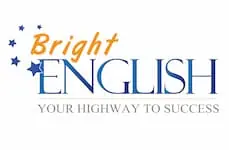The Present Simple \ El Presente Simple
- Usamos el Present Simple principalmente para describir cosas que son ciertas en general. Sin embargo, ¿qué significa “ciertas en general” en términos prácticos?
- Veamos la siguiente oración para entender mejor el significado de la información general: “Me gusta el ajedrez” - esta afirmación es cierta ahora, fue cierta ayer y, hasta donde sé, será cierta mañana. La información general sigue este principio: es algo que abarca el pasado, el presente y el futuro juntos. Aunque los casos a continuación son algo diferentes entre sí, todos reflejan este principio, con la excepción de uno.
Usamos el Present Simple para hablar de:
- Hechos
- Frecuencia de acciones y hábitos
- Estados y situaciones permanentes
- Acciones cronológicas en el presente
- Hacer cosas al decirlas
- Horarios impersonales
- Oraciones definitorias con am, is, are
| I have 2 brothers. (hecho) | Israel buys weapons from the US. (hecho) |
| I go to English lessons twice a week. (hábito) | They go swimming every Friday. (hábito) |
| I live in New York. (situación permanente) | He works as a teacher. (situación permanente) |
| Jordan passes to Pippen, Pippen drives the ball to the hoop and dunks the ball. (acciones cronológicas) | He gets up at 8:00, washes his face, gets dressed and goes to work. (acciones cronológicas) |
| I believe this is true. (opinión) | I think you are right. (opinión) |
| I promise I will come. (hacer cosas al decirlas) | I insist we go out tonight. (hacer cosas al decirlas) |
| The show starts at 10:00 a.m. (horario impersonal) | The bus arrives in 5 minutes. (horario impersonal) |
| I am a student \ She is happy. (oraciones definitorias) | They are here \ He is from New York. (oraciones definitorias) |
Estructura del Present Simple:
I:
I study at Bright English.
I don’t study at Bright English.
Do I study at Bright English?
We:
Ben and I (we) study at Bright English.
We don’t study at Bright English.
Do we study at Bright English?
You:
You study at Bright English.
You don’t study at Bright English.
Do you study at Bright English?
They:
Ben and Maya (they) study at Bright English.
They don’t study at Bright English.
Do they study at Bright English?
He:
Ben (he) studies at Bright English.
He doesn’t study at Bright English.
Does he study at Bright English?
She:
Maya (she) studies at Bright English.
She doesn’t study at Bright English.
Does she study at Bright English?
It:
It (the computer) studies well.
It doesn’t study well.
Does it study well?
Reglas del Present Simple:
- Usamos do/does para formar preguntas.
- Usamos don’t/doesn’t para formar negaciones.
- I, we, you, they = do
- He, she, it = does
- I, we, you, they = don’t
- He, she, it = doesn’t
- Los auxiliares (verbos de apoyo) do/does/don’t/doesn’t eliminan la s, es, ies.
- Solo añadimos una S, ES, IES a los verbos con He, She, It.
- Las negaciones y preguntas con am, is, are se forman de manera diferente a todas las demás oraciones en el Presente Simple. (I am not a student\ Am I student\ She isn’t happy \ Is she happy \ They aren’t here \ Are they here\He isn’t from New York \ Is he from New York)
Expresiones de tiempo comunes y adverbios de frecuencia en el Present Simple
Always, very often, often, usually, sometimes, occasionally, every now and then, every now and again, seldom, hardly ever, rarely, never.

